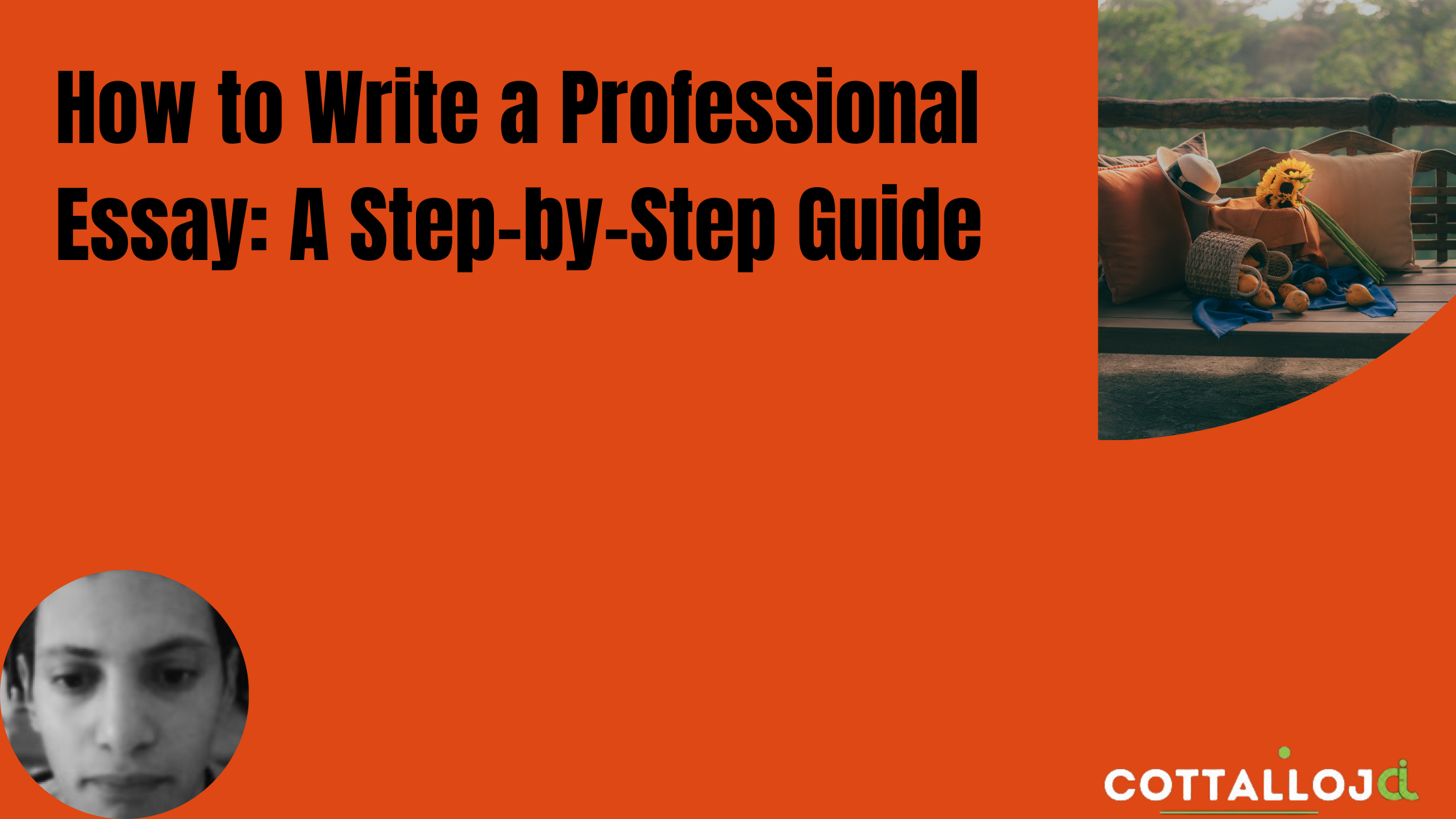Introduction
Essay writing is an essential skill that students and professionals alike must master to communicate effectively and persuasively. Whether you're a student working on assignments or a professional crafting reports or articles, knowing how to write a professional essay can greatly enhance your written communication abilities. In this guide, we'll take you through a step-by-step process to help you write essays that are clear, concise, and compelling.
Step 1: Understand the Assignment
Before you begin writing, it's crucial to fully understand the essay assignment. Read it carefully, noting any specific instructions regarding format, length, and content. Make a list of key points or questions you need to address in your essay. If you're unsure about any aspect of the assignment, don't hesitate to seek clarification from your instructor or supervisor.
Step 2: Research and Gather Information
Effective essays are built on a foundation of solid research. Depending on the topic, you may need to consult books, articles, academic journals, and reliable online sources. Take notes and organize your research materials to easily reference them during the writing process. Keep track of your sources, as you'll need to properly cite them later.
Step 3: Create an Outline
An essay outline serves as a roadmap for your writing. It helps you organize your thoughts and ensures your essay flows logically. Start by outlining the main sections of your essay, including the introduction, body paragraphs, and conclusion. Under each section, jot down key points or arguments you plan to make. This will make the writing process smoother and more organized.
Step 4: Write a Strong Introduction
The introduction is your chance to grab the reader's attention and provide an overview of your essay. Start with a hook – a compelling anecdote, a thought-provoking question, or a relevant quote. Then, provide some background information on the topic and present your thesis statement, which is the main argument or point of your essay. A well-crafted introduction sets the tone for the entire essay.
Step 5: Develop the Body Paragraphs
The body of your essay should consist of several paragraphs, each focusing on a specific point or argument related to your thesis. Start each paragraph with a clear topic sentence that introduces the main idea, followed by supporting evidence, examples, and analysis. Use transition words and phrases to ensure a smooth flow between paragraphs.
Step 6: Craft a Compelling Conclusion
The conclusion is where you tie together all the points you've made in your essay. Summarize your main arguments and restate your thesis in a concise manner. Avoid introducing new information in the conclusion. Instead, offer some insights or implications related to your topic. End with a strong closing statement that leaves a lasting impression on the reader.
Step 7: Revise and Edit
Once you've completed your essay, take a break before revising and editing. Check for grammatical errors, spelling mistakes, and punctuation issues. Ensure that your essay is well-organized and that your ideas flow logically. Consider the clarity and coherence of your writing, and make any necessary revisions to improve clarity.
Step 8: Proofread
Proofreading is the final step to ensure your essay is error-free and polished. Read your essay aloud to catch any awkward phrasing or unclear sentences. It's also a good idea to have someone else review your essay for a fresh perspective.
Step 9: Cite Your Sources
If you've used external sources in your essay, make sure to properly cite them using the appropriate citation style (e.g., APA, MLA, Chicago). Accurate citations not only give credit to the original authors but also lend credibility to your essay.
Step 10: Final Review
Before submitting your essay, conduct a final review to ensure it meets all the assignment requirements and adheres to any specific formatting guidelines. Double-check that your introduction and conclusion are strong and that your arguments are well-supported with evidence.
Conclusion
Writing a professional essay is a skill that can be honed with practice and attention to detail. By following these ten steps, you can create essays that are well-structured, persuasive, and effectively communicate your ideas. Whether you're a student or a professional, mastering the art of essay writing is a valuable skill that will serve you well in academia and beyond.






